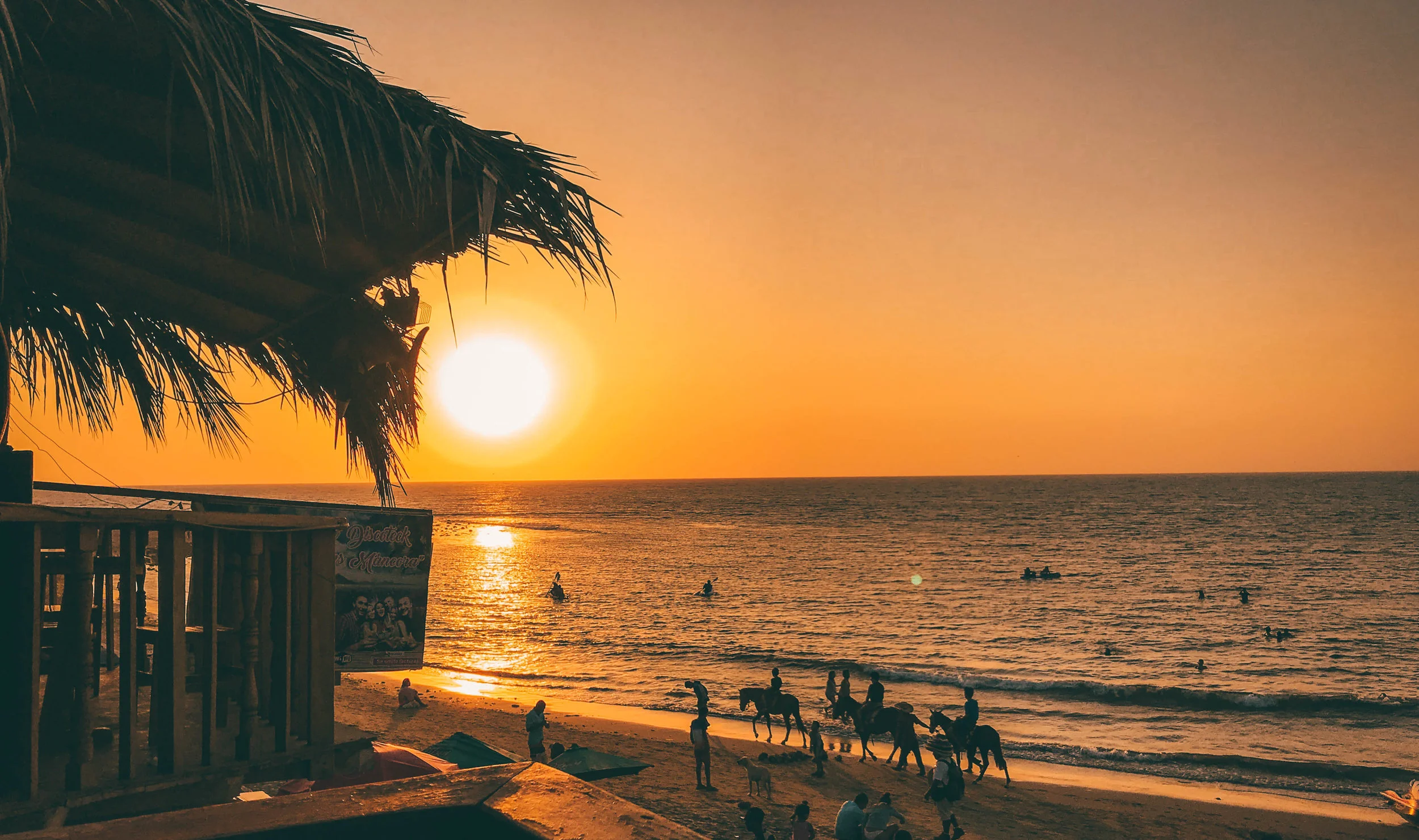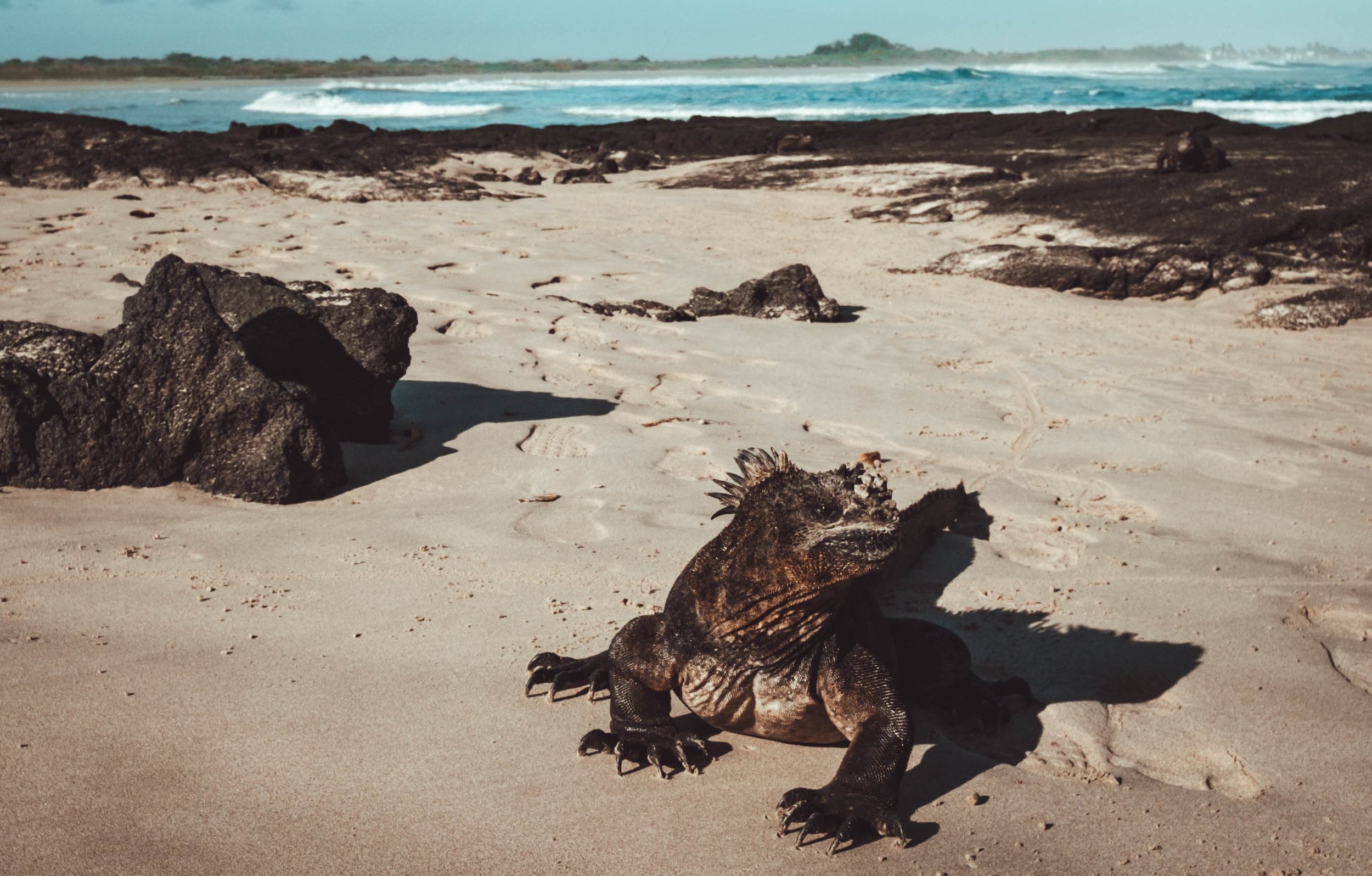Salar De Uyuni

To tear myself away from the Galápagos I knew I’d have to be heading somewhere spectacular…. so I shot straight through La Paz, took an overnight bus to Uyuni and jumped in a 4x4 with a bunch of strangers to explore the region of Potosi, namely to visit Salar de Uyuni.
First up we stop off at a train “cemetery” just outside Uyuni. The story goes that in the late 19th century the Bolivian president had grand plans of building a state of the art railway system, with Uyuni being the central hub due to the silver and mineral mines in the area. It took forever to build because the indigenous saw it as an intrusion on their way of life (being paid to transport goods using their llamas) and so they would get together and blow up parts of the railroad every so often. In the end it was agreed that it would only be used to transport minerals to the ports on the Pacific, so the locals could maintain their income through continuing to transport other goods such as food and other items to trade.
Despite some success, in the 1940s, partly due to mineral depletion, and partly due to friction with neighbouring Chile, the project was abandoned and the trains were left here to erode (quite quickly due to the salty winds blowing across from nearby the salt flats), and to be stripped for iron by the locals to sell for quick cash. Now it just gets rammed with tourists who climb all over the rusty relics for that ultimate insta worthy shot…. sorry to disappoint, but I didn’t partake.
So after taking a million photos of some rusty metal we jump back in the 4x4s and head for the salt flats. First up we’re dropped off in a section at the edge that’s just over ankle deep in water (rainy season). So, the thongs are off and I’m splashing through this salty water feeling like I’m in heaven. I hadn’t planned really anything (except to visit Galápagos and Salkantay) prior to leaving Australia, but one place I was certain I would visit was Salar de Uyuni…. call it a bucket list item or whatever, but there was no way I was coming all this way to South America and not checking out this incredible landscape. Our crew setup lunch on a little salt island and we sit down to enjoy some food surrounded by pure white in every direction. SURREAL!
There are a million and one 4x4s stopping off at the main sites but thankfully our drivers shoot off to a place where we can’t see anyone else…. just white salt in every direction as far as the eye can see. We spend a good part of an hour taking the usual perspective photos, and, like the car, I end up covered in salty water from lying on the ground to shoot the ultimate perspective shots for the Brazilians.
I was super lucky with timing too; because it’s the rainy season there is a thin layer of water covering the salt so we also get the natural mirror effect. It is a pretty damn incredible sight and I was completely mesmerised.
That night we stayed in a salt hotel (I licked the wall just to be sure….. tasted….. salty); even the bed bases were made from salt bricks. Epic sunset over the valley… I only just managed to stay awake to see it; after an overnight bus from La Paz and then jumping straight in the 4x4 I was completely knackered. Some cool facts about the salt flats….. before I forget:
it’s approx. 11000km2 and is growing by 20% per year because the halite is now approx. 60m deep (the bigger the halite, the more rapidly it produces salt apparently).
there’s approx. 10 billion tonnes of salt here, and only 25000 tonnes are extracted each year (only for local use… they don’t export outside of Bolivia because there’s no money in it).
it sits at an average of 3600m above sea level, and it’s……. flat… although they’ve recently proven that there is variance of up to 1m (whoah nelly).
There is a small section that is currently being mined for Lithium that is 49% owned by a German company (Salar de Uyuni contains an estimated 17% of the world’s lithium reserves but has only recently started to mine it).
Day 2 sees us barrelling through the most bizarre landscape - its mostly all over 4000m altitude so there’s not much in the way of flora…. mostly just dirt, rocks, salt flats, and some tufts of brown grass, with the occasional petrified coral or petrified algae from when this used to all be ocean and lakes. We even saw a Rhea bird (kinda like an Emu) with two babies running around. I thought it was a mirage and I was seeing Emus.
This is where we saw the Rhea and her babies…. I wasn’t fast enough to whip my camera out to capture it though, but this is the landscape we spent hours driving through.
We stop off at some random volcano - there are like a million in this part of the world so forgive me if I can’t recall the names. The landscape around the volcano looks completely mad, or maybe how you’d picture Mars. It’s all reddish rock that looks like hard waves. What it actually is, is mud and ice that came down from the mountains; the ice melted and the mud petrified. Because the top is highly concentrated in iron it gives off an awesome reddish colour.
Growing between the rocks is this green thing that looks like a mossy rock… but, it’s actually a mutated coral from when this was all part of the Pacific ocean. It’s one of the few places in the world this still actually survives. The locals in Chile and Peru burnt it for firewood and because it only grows at over 4000m, and having a growth rate of only 1mm a year they were wiped out before it could actually grow back. But, up here, there is sweet FA, no one lives here and the coral is free to grow as slowly as it likes.
At this stop there was a dude barbecuing llama sausage sandwiches…. don’t mind if I do. Tasty AF…. I wasn’t event hungry but how could I pass up that opportunity?
We continue driving through these captivating landscapes until we rock up at some lagoon (name evades me again) full of flamingos. We sit down for another feast of a lunch, lakeside. Flamingos are everywhere and this isn’t even the busy season when hundreds of thousands arrive.
There are generally 3 types of flamingos here, James, Andean and Chilean. The Andean ones are fucking insane - they are super rare and only reside in the Andean mountains (as the name suggests). They have these crazy cool beaks that help them forage for food in the lakes (algae and diatoms etc) and what I reckon is interesting is that depending if they are in colonies with James or Chilean flamingos they will forage in the patters of the James or Chilean flamingos. Also I don’t know if the dude was pulling our leg but he did say that when the lakes freeze over in winter they can stay there frozen into the lake… they do something with their wings and slow their hearts apparently???
We stopped off at Árbol de Piedra which is a rock that has been eroded by the wind to look like a tree. The wind was no joke; I literally got whipped like a motherfucker, sand in my eyes, covering my camera lens and then a wild fox came to play so i jumped back into the safety of the car.
Apparently you’re not allowed to piss into the lake standing up or squatting… rules AM I RIGHT????
Yeah I was there too…. see…. proof.
We finish off day two at Laguna Colorada which is yet again filled with flamingos and is super picturesque. The red colour comes from a combination of the algae, sun and wind and changes colour depending on those elements. Some days it’s apparently blood red.. we got it more at a burnt orange colour which I reckon looked deadly.
The next morning we’re up at like 4:30am which feels way too early given we smashed a bunch of long necks the night before at the pub and played some embarrassingly bad pool. My headache from the altitude the day before still hasn’t gone away - don’t think the bottle of red, or the half a dozen long necks helped…… so I’m traipsing around these geysers at sunrise just hoping I don’t lose my footing and slip into the 300 degree celsius mud. My travel insurance expired in December and I never bothered renewing it (half forgot, half couldn’t be fucked) so really I’m playing with fire here.
We cruise through the Salvador Dali desert - named so because of how much it resembles his paintings with random rock boulders eroded away in surreal ways from the wind and sand. Our driver is absolutely smashing it out on the “road”; I honestly have never seen anyone drive quite like this on gravel and rocks, and I grew up in the NT, so that’s saying something. I could only laugh and take videos of it.. BIZARRE.
After checking out the thermal springs and Green Lake we cruise though to the border to head into Chile - an experience in itself. The pic below is the official Bolivian Immigration building that you line up at to stamp out of Bolivia. No security, no fences, no roads even. A stark contrast to a few meters outside of the frame where Chile begins.. where there are offical signs, a bitumen road and a big modern immigration building full of facilities including computers, toilets, chairs, inspectors, security, lots of questions etc etc. I don’t think I’ve ever quite seen such an obvious difference between two countries at the border.






































































